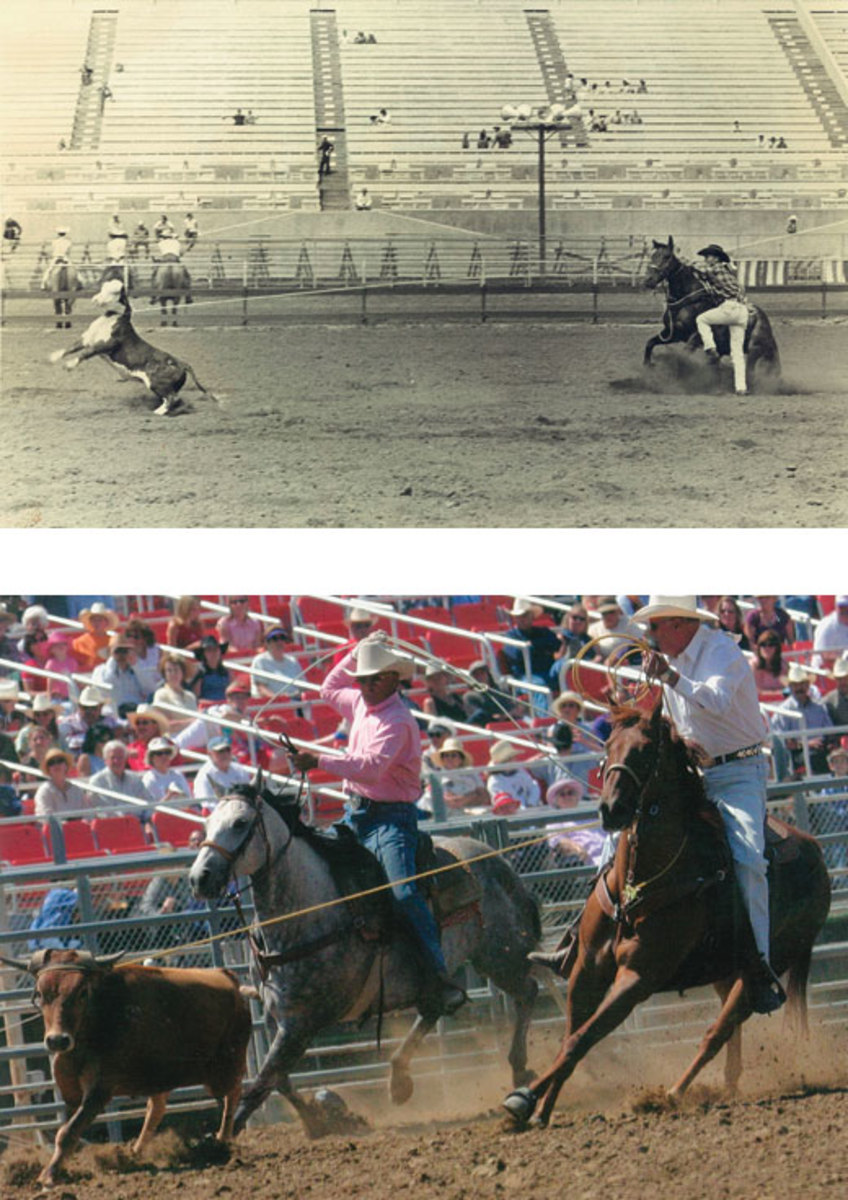I usually discuss physical ailments of the horse in this column. However, after reminiscing with a friend about some emotional or psychological problems with horses I’ve encountered over the years, I decided to share a couple of stories relative to that side of a horse.
The first anecdote I’ll share occurred 50 years ago at the California Rodeo in Salinas. I’d hauled my calf roping and team roping horses, Brownie and Jake, to Salinas, and had them stalled next to each other. Since I’d been up in the slack in both events the first two days, I would saddle both horses, go to the arena and tie up in back of the roping chutes.
On the third day, I was up during the rodeo in the calf roping, so I left Jake in the barn, which is in the direction you’re going down the arena from the timed-event chute. My calf horse, Brownie, started nickering and fretting to go back to the barn where Jake was left. I stubbornly kept fighting with Brownie, and ran my calf. When I roped the calf, the horse stopped and then blithely nickered and circled toward the barns, leaving me to do battle with a 350-pound calf on a slack rope.

In hindsight, I chuckle at how easy it would have been to defuse the situation. I should have put a halter on Jake and tied him behind the roping chutes, like I had every other day. Incidentally, I’d won the first go-round and was in the lead on two calves when this episode took place, so Brownie wasn’t just a dink.
The second horse psychology experience I’ll share concerned Augustus, a gray horse I heeled on a few years ago. The horse was 9 years old when I got him and was really solid to rope on. My first “rodeo performance experience” with Augustus happened at the Gold Card roping at the Red Bluff (Calif.) Roundup. We were sitting at the end of the track where the grand entry was lining up, and Cotton Rosser asked us “old guys” to ride in the grand entry. Talk about scary and out of control.
Augustus went to shaking and lunging all the way down the track. When the rodeo started, I tried to sit on him next to the chutes with my friends to watch the calf roping.
It became apparent that it was dangerous to me, and the people close to me, to do that. I gave in to the horse and went out back until the team roping. Not knowing what to expect, I just headed into the box at a high trot and went.
The horse worked perfectly. I learned that this horse suffered panic attacks when exposed to the loud sound systems at rodeos. He functioned well if left away from the arena until it was time to rope. He never got accustomed to the noise, tranquilizers didn’t work, and stuffing his ears with cotton didn’t do much either.
I firmly believe that most nervous problems can be conditioned out of a horse. But, from my personal experience, and stories told to me by experienced horsemen, I think there are times to let the horse have his say.










